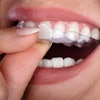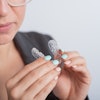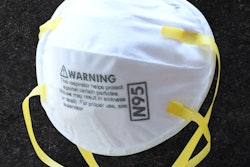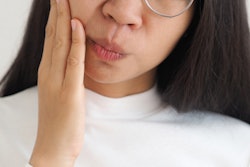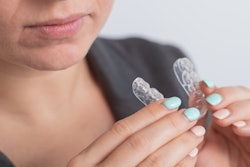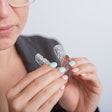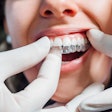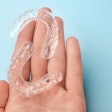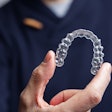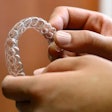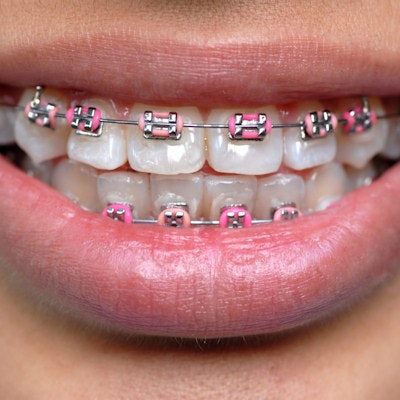
In the past 30 years, dentistry has learned that conventional orthodontic treatments do not cure or cause temporomandibular disorders (TMDs), according to an article published on January 7 in the American Journal of Orthodontics and Dentofacial Orthopedics.
Time and evidence-based studies also have shown that clinicians must no longer treat these disorders using an overly simplistic occlusal and mechanical-based model of care. Instead, they should follow a medical, biopsychosocial standard of care, the authors wrote.
"They must become familiar with the modern usage of conservative and reversible therapies, and if indicated, they should consider the involvement of other health care professionals to better serve their patients," wrote the group, led by Dr. Sanjivan Kandasamy from the Center for Advanced Dental Education at Saint Louis University.
Debated for a century
For about 100 years, the management of temporomandibular disorders has stirred up debate and differing opinions among orthodontists and other dental specialists, the authors noted.
Concerns about the relationship between orthodontics and TMDs reached a tipping point in 1987 with a Michigan lawsuit involving 16-year-old Susan Brimm. A specialist orthodontist treated the girl's class II division 1 malocclusion with a 7-mm overjet. Her treatment included extracting two maxillary first premolars, full fixed appliances, and headgear. Brimm had no TMD signs or symptoms before or during treatment; however, she complained of joint pain and headaches after the appliances were removed.
Eventually, she was referred to an oral surgeon to have her mandibular third molars removed. Once the molars were removed, Brimm developed severe pain with clicking and locking of the joint. A complaint was filed against the oral surgeon for failing to diagnose a TMD problem before her molars were pulled, which worsened her condition. The case was settled for $2,500.
Another complaint was filed against the orthodontist for providing substandard treatment, resulting in TMD signs and symptoms. Expert witnesses, who were not licensed dentists in the state, testified that her orthodontic treatment shouldn't have included extracting maxillary premolars, which led to the "over retraction of her maxillary incisors, distally displacing her mandible and ultimately resulting in TMJ internal derangement causing her joint pain, clicking, and locking." The plaintiff was awarded $850,000, the authors wrote.
A twofold effect
The case ended up creating a larger divide between orthodontists and TMD experts, but it also triggered the American Association of Orthodontists to conduct research to gain further insight into orthodontic treatment in relation to TMDs. In January 1992, the research was published in a special temporomandibular joint issue in the American Journal of Orthodontics and Dentofacial Orthopedics. The issue focused on the relationship between orthodontics, occlusion, condyle positions, and temporomandibular disorders.
Since 1992, the dental field has learned much more about orthodontic treatment and how it relates to TMDs, the authors wrote. Evidence suggests that treatments with and without extractions, as well as the appropriate use of headgear, elastics, chin cups, and deep overbite correction, do not cause temporomandibular disorders. Also, these treatments can be safely used to retract upper jaw incisor teeth. Furthermore, studies have shown that incisor retraction doesn't distally position condyles within the glenoid fossa leading to a displaced temporomandibular joint.
A patient's occlusion or condyle position after orthodontic treatment does not generally decrease or increase the risk of developing TMDs, according to the authors. Therefore, orthodontists should not advise parents of young children that orthodontic treatment will reduce or eliminate a child's risk of developing these disorders in the future, they noted.
Additionally, clinicians must be aware of the current TMD management approach. Clinicians should consider genetics of pain vulnerability and hypersensitivity, pain pathophysiology, chronic pain, and behavioral, environmental, and psychosocial factors and refer to or consult with other healthcare professionals, including psychologists, physical therapists, and orofacial pain specialists.
Evidence over beliefs
Even after three decades of quality scientific inquiry and compelling evidence, some clinicians will dismiss proof that contradicts their beliefs and will use practices such as nonextraction, expansion, jaw growth, and alternative orthodontics to cure or prevent TMDs, Kandasamy and colleagues added.
However, "clinicians must realize that adopting these unsupported and unfounded TMD practices will not only compromise their patients' well-being but will most certainly result in avoidable and indefensible legal claims," they concluded.

